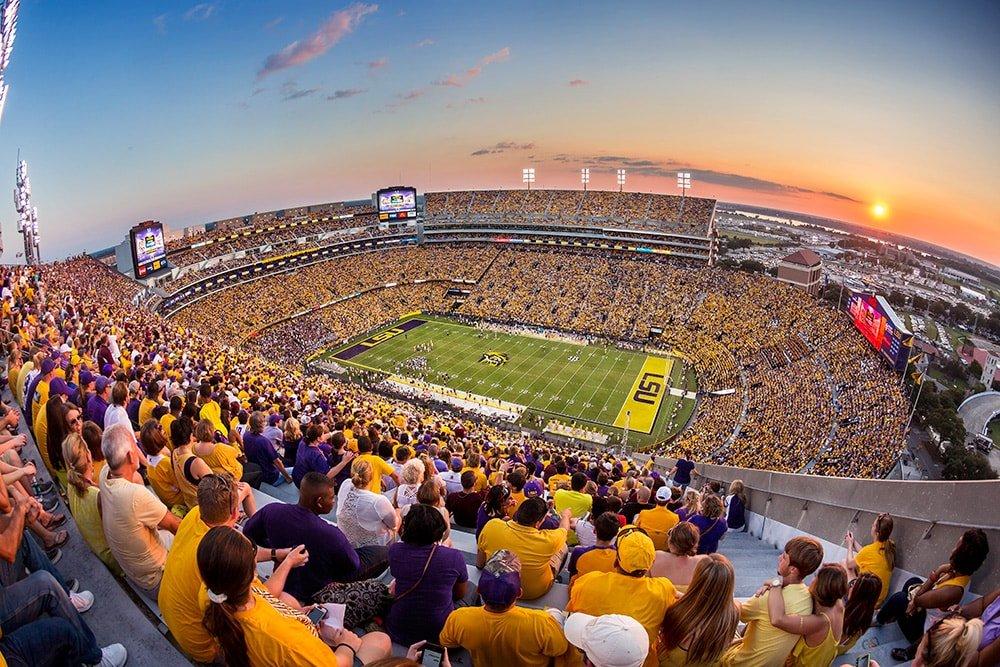In an era where innovation shapes every facet of our lives, the world of sports is no exception. Stadiums are evolving beyond mere arenas for competition; they are becoming immersive hubs where cutting-edge technology enhances the fan experience, player performance, and sustainability. Dezeen’s roundup of ten upcoming sports stadiums showcases this exciting intersection of architecture and technology, revealing how the future of sports venues is being designed not just to host games, but to redefine them. From intelligent infrastructure to interactive environments, these pioneering projects invite us to witness the game-changing role technology is set to play on the field-and beyond.
Innovative Design Features Shaping the Future of Stadium Experiences
Modern stadiums are no longer just spaces for watching sports; they are immersive environments where technology and architecture fuse to create unforgettable experiences. Cutting-edge LED roofs adjust lighting dynamically to sync with game moments or crowd reactions, while smart seating integrates sensors that monitor comfort and even offer personalized climate control. This fusion of tech ensures fans remain engaged and comfortable from the opening whistle to the final play, redefining how we celebrate sport in real-time.
Beyond comfort and engagement, sustainability plays a vital role in these future-forward arenas. Innovations such as rainwater harvesting systems, solar panel facades, and extensive green roofing not only reduce environmental footprints but also enhance the aesthetic appeal. Below is an overview of key technological features transforming these new stadiums:
- Augmented Reality (AR) Integration: Real-time stats and interactive fan games accessible via smartphones
- Biometric Access: Seamless, secure entry through facial recognition and fingerprint scanning
- Modular Seating: Flexible configurations to maximize capacity or convert for concerts and events
- Drone Deliveries: In-seat food and merchandise delivery via automated drones
| Feature | Benefit | Example |
|---|---|---|
| Smart Lighting | Enhances atmosphere and energy efficiency | Dynamic LED roof panels |
| Interactive Screens | Boosts fan engagement with instant replays and social feeds | 360° panoramic displays |
| Eco-friendly Design | Reduces carbon footprint and operational costs | Solar facades & green roofs |
Integrating Smart Technology to Enhance Fan Engagement and Sustainability
Cutting-edge arenas are now designed as immersive ecosystems where fans are not just spectators but active participants. By embedding smart sensors and IoT devices, these stadiums create personalized experiences that respond in real time to crowd dynamics, weather changes, and individual preferences. Imagine app-controlled seats that adjust lighting and temperature according to your mood or interactive screens that let you explore player stats and instant replays with a simple touch. This seamless integration of technology bridges the digital and physical realms, cultivating a fan connection that extends far beyond the final whistle.
Equally significant is how these venues champion sustainability through intelligent design. Energy consumption is optimized with AI-driven systems that manage lighting, ventilation, and waste reduction. Rainwater harvesting, solar panels, and smart recycling bins are increasingly standard, providing visible reminders of a green commitment. Below is a quick snapshot of features commonly embedded in these forward-thinking stadiums:
- Real-time crowd analytics to enhance safety and streamline entry
- Smart ticketing systems that reduce paper waste and enable contactless entry
- Dynamic energy management using renewable sources and AI forecasting
- Interactive fan engagement zones powered by augmented reality
- Closed-loop water recycling for pitch maintenance and sanitation
| Technology | Fan Benefit | Sustainability Impact | |||||||||||||
|---|---|---|---|---|---|---|---|---|---|---|---|---|---|---|---|
| AI-powered seat customization | Enhanced comfort and personalization | Energy savings through targeted climate control | |||||||||||||
Augmented It looks like your table entry for “Augmented…” was cut off. Would you like me to help complete the table and elaborate on the technologies and their benefits? Or perhaps summarize the content into a concise overview? Please let me know how I can assist!
Recommendations for Embracing Multifunctional Spaces and Advanced ConnectivityTo fully unlock the potential of modern stadium design, planners must prioritize flexibility and integration in their approach. Embracing multifunctional spaces means designing areas that effortlessly transition from match-day excitement to corporate events, concerts, or community gatherings. Incorporating movable seating, retractable roofs, and modular facilities ensures venues remain vibrant and profitable year-round. Meanwhile, layering these spaces with cutting-edge connectivity – from ultra-fast Wi-Fi to IoT-enabled crowd management systems – creates an immersive fan experience that’s both seamless and personalized. Technology and spatial adaptability work hand in hand, but managing this requires a thoughtful balance. Stadium operators should invest in centralized digital platforms that monitor and optimize lighting, acoustics, and HVAC based on event type and crowd density. Below is a snapshot of critical technological features that can enhance multifunctional stadium environments:
Final ThoughtsAs these ten upcoming sports stadiums prepare to open their gates, they stand as testaments to the seamless fusion of athletic tradition and cutting-edge technology. By integrating smart designs, immersive experiences, and sustainable innovations, they redefine what it means to be a modern sporting arena. Whether it’s through interactive fan engagement, eco-friendly construction, or advanced connectivity, these venues are not just places to watch the game-they’re dynamic stages where technology truly takes to the field, setting a new standard for the future of sports architecture. |
